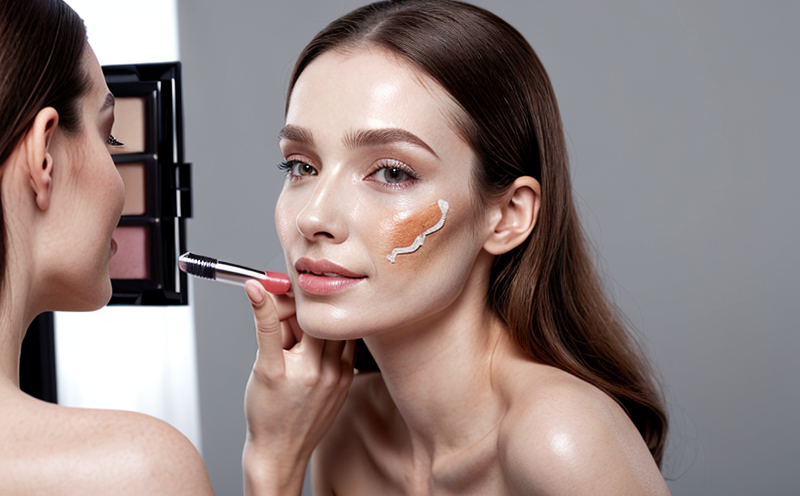Clinical Testing of Cosmetic Exfoliating Creams
The clinical testing of cosmetic exfoliating creams is a critical step in ensuring that products are safe and effective for use. This process involves rigorous evaluation to determine the product's efficacy, irritation potential, and overall safety profile. For quality managers and compliance officers, understanding these tests is essential as they ensure that products meet regulatory standards and deliver on their intended benefits.
Exfoliating creams play a significant role in skincare routines by promoting cell turnover and removing dead skin cells. However, the effectiveness of an exfoliating cream can vary widely depending on its formulation. Clinical testing helps to standardize these effects and provides objective data that can be used for marketing purposes and regulatory compliance.
The testing process typically involves several phases, each designed to evaluate different aspects of the product's performance. The initial phase focuses on evaluating the mechanical properties of the cream, such as its texture and consistency, which are crucial factors in determining how well it will exfoliate. This is followed by a series of clinical trials where the products are applied to volunteers under controlled conditions.
During these trials, various measurements are taken to assess the product's efficacy. These include visual assessments of skin texture and color, as well as quantitative measures such as the number of dead cells removed from the skin surface. The results of these tests provide valuable insights into the product's performance and help in refining its formulation.
The clinical trials are typically conducted under ISO standards to ensure consistency and reliability. Compliance officers must be aware of these standards, as they form the basis for regulatory compliance. These trials also involve monitoring for any adverse effects, ensuring that the product is safe for use by a wide range of skin types.
For R&D engineers, understanding clinical testing is vital for developing new formulations and improving existing products. By leveraging the insights gained from these tests, they can optimize formulas to enhance efficacy while minimizing potential risks. This knowledge also aids procurement teams in selecting suppliers who can provide high-quality ingredients that meet stringent standards.
One of the key challenges in clinical testing is ensuring consistency across different batches and formulations. To address this, advanced instrumentation is used to standardize measurements. This includes spectrophotometers for measuring skin color changes and microscopes for detailed visual assessments. These tools provide precise data that can be used to fine-tune the product's formulation.
The results of these tests are then compiled into comprehensive reports that serve as a basis for decision-making. Compliance officers use these reports to ensure that products meet regulatory requirements, while quality managers rely on them to maintain consistent product quality. R&D engineers utilize this information to innovate and improve their products, ensuring they remain competitive in the market.
In conclusion, clinical testing of cosmetic exfoliating creams is a multifaceted process that involves rigorous evaluation under controlled conditions. It provides valuable insights into the efficacy and safety of these products, making it an indispensable part of the product development lifecycle. For those involved in quality management, compliance, R&D, and procurement, understanding this process is essential for ensuring that products meet high standards.
Scope and Methodology
The scope of clinical testing for cosmetic exfoliating creams involves evaluating the product's efficacy, safety, and irritation potential. This comprehensive approach ensures that the cream not only works as intended but also does so without causing harm to users. The methodology typically includes several key steps:
- Initial assessment of the cream’s mechanical properties.
- Conducting clinical trials with volunteers under controlled conditions.
- Evaluating skin response through visual and quantitative measures.
- Monitoring for any adverse effects or irritations.
The tests are conducted according to international standards, such as ISO 21778:2019, which provides guidelines for the testing of cosmetic products. These standards ensure that the testing process is consistent and reliable across different laboratories.
During the clinical trials, various parameters are measured to assess the product's effectiveness. Visual assessments include observing changes in skin texture and color, while quantitative measures focus on the number of dead cells removed from the skin surface. These data points provide a clear picture of the cream’s efficacy and help in refining its formulation.
Monitoring for adverse effects is another crucial aspect of the testing process. This involves closely observing volunteers for any signs of irritation or allergic reactions. By doing so, potential risks can be identified early on, allowing for necessary adjustments to the product formula. Compliance officers play a vital role in ensuring that these tests are conducted according to regulatory requirements.
The results of these clinical trials are then compiled into detailed reports. These reports serve as the basis for decision-making and provide valuable insights for quality managers, R&D engineers, and procurement teams. They ensure that products meet high standards of safety and efficacy, thereby enhancing consumer confidence in the brand.





